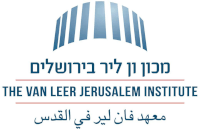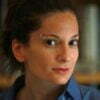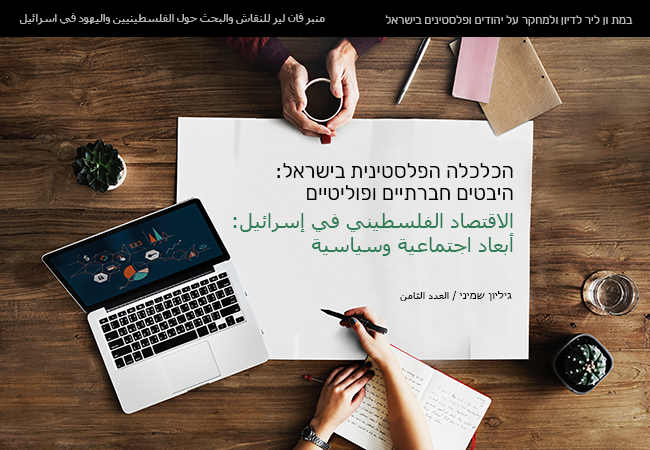In A Tale of Love and Darkness (originally published in 2002), Amos Oz, who was born in 1939 and who over the years was regarded as the representative author of the hegemonic Israeli left, sketches his own genealogy and that of his family over the span of a century and across three continents, while at the same time shaping an archive of broken and interlinked histories: European and Jewish, revisionist and socialist, Jewish and Arab.1Amos Oz, A Tale of Love and Darkness, translated by Nicholas de Lange (New York: Harcourt, 2004). Oz lingered on the events of 1948 in an attempt to process the Israeli-Palestinian conflict, and returned to a period that has remained a kind of lacuna in Israeli culture: the involvement of the British government in Palestine and its impact on the Jewish-Zionist identity and on the Arab identity in colonial and decolonial aspects. In doing so he presented an original and multidirectional way of thinking about the conflict. Some six years later, the author Nurith Gertz, in her book On His Own Initiative: Four Life Chapters of Amos Keinan (2008), traces the memories of her Alzheimer’s-stricken husband, the novelist, columnist, sculptor and former fighter in the Lehi underground paramilitary group.2Nurith Gertz, Al Da’at Atzmo: Arba’a Pirkei Chaim shel Amos Keinan (On his own initiative: four life chapters of Amos Keinan) [Hebrew] (Tel Aviv: Am Oved, 2008).
In the last window of time before his memory slips into oblivion, and through reflections on their years together and on things that he recounted and repressed, Gertz (b. 1940) attempted to extract information about the battle in Deir Yassin – one of the most horrific battles that took place in 1948. In the battle, in which Keinan participated along with some 130 Lehi and Etzel fighters and with additional support from the Haganah, the village of Deir Yassin was attacked and taken over, and most of its residents – men, women and children – were massacred. Their bodies were then piled up and torched to cover up the traces. In 1948 (originally published in 2011), Yoram Kaniuk (b. 1930) returned to the battles of 1948 in which he participated – in Nebi Samuel, the Castel (al-Qastal), and Qatamon – and described the events of the war as a “mass suicide of young children.”3Yoram Kaniuk, 1948, translated by Anthony Berris (New York: New York Review of Books, 2012). Kaniuk brought to the fore the contradictions that underlie the Zionist ethos. He cast the myth of birth as a modern secular vision that expresses the longing for a normal life in the land of Israel – and yet a vision that is steeped in death and contains irrational elements regarding the creation of a “new Jew” out of the soil of the homeland or out of the sea. Kaniuk presents the flip side of Israeli nationalism – an occupying, cleansing, looting, disaster-inflicting nationalism – while confessing to his own part in the war crimes and recounting how he murdered an Arab child in the village that he and his fellow fighters conquered.
From a different position, Tomer Gardi (b. 1974), in his Stone, Paper (2012), challenged the common distinction between “primary witnesses” and “secondary witnesses” and between “the memory of the archive” and “constructing the memory of the war,” and exposed two interrelated events: the story of the destruction of the Shi’ite Muslim village of Hunin, whose house bricks were later used to build the Ussishkin Museum in Kibbutz Dan, where Gardi was raised; and the rape and murder of four Arab women by soldiers of the Israeli Defense Force during the conquest of the village.4Tomer Gardi, Even, Niyar (Paper, stone,) [Hebrew] (Tel Aviv: Hakibutz Hame’uchad, 2011). Gardi cross checked testimonies from different archives, gave presence to the injustices that took place, and brought to the fore questions related to authority, to the procedures that govern the revealing of documents, and to practices of erasure.
The works of Amos Oz, Nurith Gertz, Yoram Kaniuk and Tomer Gardi are examples of a wave of autobiographical Israeli literature that, at the turn of the twentieth century, went back to the threshold point of 1948 and participated in the creation of a public ethical-political discourse that aims to continue in literature and in other ways – the political discourse, which has reached a dead end.5See also Dana Olmert, “Mothers of Soldiers in Israeli Literature: The Return of the Politically Repressed,” Prooftexts 33, 3 (2013): 333364; Renana Keydar and Ron Dudai, “Mishpat Medumyan: Chevra Ezrachit, Sifrut, veTzedek Ma’avari Bikorti beYisrael” (Imagined justice: civil society, literature and critical transitional justice in Israel” [Hebrew], Theory and Criticism 50 (2018): 371-390. Oz, Gertz, Kaniuk and Gardi returned in their works to 1948 in an attempt to process the injustices of that war as they were etched in their memories and in the Israeli public memory. The connection between ethics and justice and law in their works, which form their own kind of archive, underscores the role of Israeli literature as a driving force for mutual recognition and restorative justice, and as a possible agent of peace and reconciliation. All four authors are in search of alternative ways to establish a civil society through a renewed negotiation about the Zionist and Palestinian social and cultural reservoirs; and they pursue this by exposing personal and public crises of identity alongside confessions of destruction and war crimes. Yet I argue that their autobiographical works, written from diverse built-in autobiographical positions, do more than merely condemn or hold a literary court martial: in their attempt to re-build the archive of 1948 as a literary ethical-political space, they invite a broader mode of coping with the Zionist and Palestinian historiography of 1948 – out of a renewed examination of points of friction and ideological and social processes of erosion and erasure – as opposing historiographies that can be re-examined. This act of re-archiving through autobiography is what I wish to call the “tectonic ethics” of writing an archive. This ethics regards the literary work as an archive that contains within it past and present layers of archives, of other times and other spaces. After the failure of the Oslo Accords (1993-1998), Rabin’s assassination (1995), and the al-Aqsa Intifada (2000), Israeli society was cast into a deep conceptual, political and social crisis. The political, social and economic optimism that linked the Oslo Accords with the vision of the New Middle East was replaced by a collective hopelessness and fatigue, which became more severe at the turn of the century. This predicament, according to Edna Lomsky-Feder and Eyal Ben-Ari, led to a perception characterized by “the loss of time coordinates,” an extreme expression of the normalization of ongoing fighting that in Israeli consciousness came to be perceived as one long and eternal war.6Edna Lomsky-Feder and Eyal Ben-Ari, “HaSiach HaPsichologi veHaNormalizatzia shel Milchama beYisrael” (The psychological discourse and the normalization of war in Israel), in Tzava SheYesh Lo Medina? (An army that has a state?) [Hebrew], edited by Gavriel Shefer, Oren Barak and Amiram Oren (Jerusalem: Carmel, 2008), 276-300.
Oz, Gertz, Kaniuk and Gardi returned in their works to 1948 in an attempt to process the injustices of that war as they were etched in their memories and in the Israeli public memory. The connection between ethics and justice and law in their works, which form their own kind of archive, underscores the role of Israeli literature as a driving force for mutual recognition and restorative justice, and as a possible agent of peace and reconciliation. All four authors are in search of alternative ways to establish a civil society through a renewed negotiation about the Zionist and Palestinian social and cultural reservoirs; and they pursue this by exposing personal and public crises of identity alongside confessions of destruction and war crimes. Yet I argue that their autobiographical works, written from diverse built-in autobiographical positions, do more than merely condemn or hold a literary court martial: in their attempt to re-build the archive of 1948 as a literary ethical-political space, they invite a broader mode of coping with the Zionist and Palestinian historiography of 1948 – out of a renewed examination of points of friction and ideological and social processes of erosion and erasure – as opposing historiographies that can be re-examined. This act of re-archiving through autobiography is what I wish to call the “tectonic ethics” of writing an archive. This ethics regards the literary work as an archive that contains within it past and present layers of archives, of other times and other spaces.
This movement can be described in several ways and directions. In the spirit of Derida’s claim that the question of the archive is not “the question of a concept dealing with the past… It is the question of a response, of a promise and of a responsibility for tomorrow,”7Jacques Derrida, Archive Fever: A Freudian Impression, translated by Eric Prenowitz (Chicago: University of Chicago Press, 1996), 36. each one of these works places at its center an archive that connects different times and spaces and tries to map the past anew, as a new way of perceiving the future. In this new wave, through the autobiographical genre, Hebrew literature, which has always played a national role in the public discourse, offers a renewed archiving of terms that have dropped out of the discourse. It exposes patterns of erasure and silencing that contributed – and contribute still – to the fortification of the Zionist narrative, and proposes processes of recognition of the “others” and acknowledgement of injustices as part of human processes of reconciliation and forgiveness. In their archival role, and in the points of tension that are embodied in this authority, the works bring together personal confessions, interviews with Jews and Arabs, testimonies from the IDF archive and private archives, photographs and protocols. These enable us to suspend, even if only briefly, the hierarchical structuring of competing memories which characterizes the public discourse in the present century, and to avoid the zero-sum game between competing traumas – in favor of a multidirectional memory of human histories, which are intertwined and allow for the recognition of denied narratives.8Michael Rothberg, Multidirectional Memory: Remembering the Holocaust in the Age of Decolonization (Stanford: Stanford University Press, 2009). Making the past accessible to the future also enables a new language, as Amir Eshel wrote following Hayden White: a return to the past as a literary movement toward what is possible, “as agents of human history and not just as its victims… and as works that partake in the creation of a ‘vocabulary’… that plays a significant role in shaping the present, as well as in the attempt to imagine – in actual practice – the future.9“Amir Eshel, “Atidiyut uKtivat HaAvar: Al yetzirato shel Alexander Kluge” (Futureness and writing the past: on the work of Alexander Kluge) [Hebrew], the Annual Marcel Reich-Ranicki Chair Lecture, Minerva Institute for German History, Tel Aviv University, 2014, 9.
As a backlash to postmodern tendencies, and after the declaration of the death of the author, these autobiographical novels written in the post-Oslo period posit an Archimedean ‘I’ whose unique trait is “the fact that no one can answer in my place.”10Emmanuel Lévinas, The Humanism of the Other, translated by Nidra Poller (Urbana: University of Illinois Press, 2003 [1972]), 71. Yet the archival practice often comes up against ideological, social and political blind spots that raise questions about the literary construction of the archive and about the possibility of establishing a different ethical-political imagination. In doing so, this literature also thereby marks the boundaries, failures and challenges of the ethical-political imagination, and allows us to observe the bifurcations and tensions out of which it emerges. This move, and the act of critical reading, create an opening for a negotiation about the archive of 1948 in the context of processes of reparation and reconciliation. These are processes that involve questions of recognition, acknowledgement of historical injustices, and a striving to assume responsibility in a reality of ongoing conflict. This kind of exploration affords the possibility of coping with ongoing political conflicts by imagining a different society, a mode of coping that centers on attempts to contain conflicting narratives, on mutual respect, on partnership and on empathy.
The alternatives that the above mentioned works propose open up a horizon of possibility for profound processes that stand to expand the field of democratic struggles and to strengthen Jewish-Palestinian civil collaborations. They operate within an existing – but weakened – cultural and social field that is in need of vital changes in its political-social imagery. Though they are not free of their own problems and tensions, these works, in the act of archiving they offer, outline a possible infrastructure for a new political dialogue about historical, social and cultural arrangements.
- 1Amos Oz, A Tale of Love and Darkness, translated by Nicholas de Lange (New York: Harcourt, 2004).
- 2Nurith Gertz, Al Da’at Atzmo: Arba’a Pirkei Chaim shel Amos Keinan (On his own initiative: four life chapters of Amos Keinan) [Hebrew] (Tel Aviv: Am Oved, 2008).
- 3Yoram Kaniuk, 1948, translated by Anthony Berris (New York: New York Review of Books, 2012).
- 4Tomer Gardi, Even, Niyar (Paper, stone,) [Hebrew] (Tel Aviv: Hakibutz Hame’uchad, 2011).
- 5See also Dana Olmert, “Mothers of Soldiers in Israeli Literature: The Return of the Politically Repressed,” Prooftexts 33, 3 (2013): 333364; Renana Keydar and Ron Dudai, “Mishpat Medumyan: Chevra Ezrachit, Sifrut, veTzedek Ma’avari Bikorti beYisrael” (Imagined justice: civil society, literature and critical transitional justice in Israel” [Hebrew], Theory and Criticism 50 (2018): 371-390.
- 6Edna Lomsky-Feder and Eyal Ben-Ari, “HaSiach HaPsichologi veHaNormalizatzia shel Milchama beYisrael” (The psychological discourse and the normalization of war in Israel), in Tzava SheYesh Lo Medina? (An army that has a state?) [Hebrew], edited by Gavriel Shefer, Oren Barak and Amiram Oren (Jerusalem: Carmel, 2008), 276-300.
- 7Jacques Derrida, Archive Fever: A Freudian Impression, translated by Eric Prenowitz (Chicago: University of Chicago Press, 1996), 36.
- 8Michael Rothberg, Multidirectional Memory: Remembering the Holocaust in the Age of Decolonization (Stanford: Stanford University Press, 2009).
- 9“Amir Eshel, “Atidiyut uKtivat HaAvar: Al yetzirato shel Alexander Kluge” (Futureness and writing the past: on the work of Alexander Kluge) [Hebrew], the Annual Marcel Reich-Ranicki Chair Lecture, Minerva Institute for German History, Tel Aviv University, 2014, 9.
- 10Emmanuel Lévinas, The Humanism of the Other, translated by Nidra Poller (Urbana: University of Illinois Press, 2003 [1972]), 71.

















